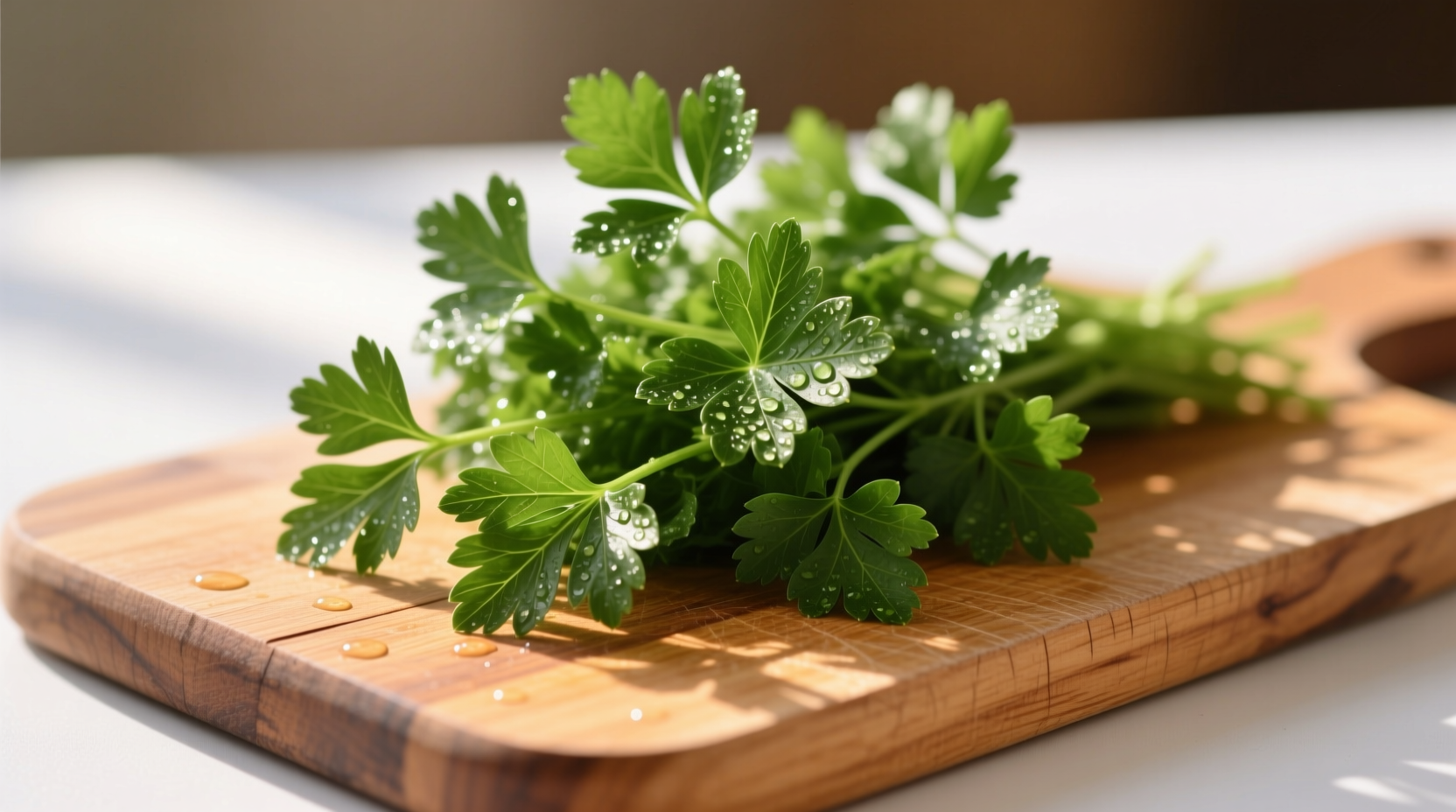When exploring parsley mediterranean applications, understanding the specific variety and usage techniques makes all the difference in authentic flavor development. Flat-leaf parsley (Petroselinum crispum neapolitanum) dominates Mediterranean cooking due to its superior flavor profile and texture compatibility with regional dishes. Unlike its curly counterpart commonly found in North American supermarkets, this variety withstands cooking processes while maintaining its distinctive fresh, slightly peppery notes that define countless classic preparations.
The Essential Mediterranean Parsley Variety
Flat-leaf parsley—often called Italian parsley—serves as the backbone of Mediterranean herb traditions. Its broader, darker leaves contain higher concentrations of myristicin and apiol, essential oils responsible for the characteristic flavor that enhances everything from Greek dakos to Spanish salmorejo. Historical cultivation records from the 16th century show Italian farmers selectively breeding this variety for culinary use, establishing its dominance across the region.
| Parsley Type | Flavor Intensity | Culinary Applications | Regional Preference |
|---|---|---|---|
| Flat-leaf (Italian) | Strong, robust | Cooking, sauces, salads | Greece, Lebanon, Italy, Spain |
| Curly parsley | Mild, grassy | Garnish, raw applications | Northern Europe, North America |
| Japanese parsley | Distinctive, stronger | Asian fusion dishes | Not traditional in Mediterranean |
Practical Culinary Applications
Mastering how to use parsley in Mediterranean cooking requires understanding its role in flavor layering. In Lebanese tabbouleh, parsley constitutes 60-70% of the herb mixture—far exceeding mint—to create the dish's signature fresh, vibrant character. The key technique involves chopping leaves finely while avoiding stems, which contain bitter compounds. For authentic gremolata, combine equal parts flat-leaf parsley, lemon zest, and garlic, allowing flavors to meld for 30 minutes before serving with osso buco.
When incorporating parsley into cooked dishes, add it during the final 2-3 minutes of preparation. Extended cooking degrades apiol, diminishing the characteristic flavor profile that defines Mediterranean parsley varieties. This timing principle applies equally to Spanish romesco sauce, Turkish koru salads, and Greek horta preparations.

Growing and Selecting Authentic Mediterranean Parsley
For gardeners seeking growing Mediterranean parsley at home, select varieties like Italian Giant or Flat Leaf Single that replicate traditional flavor profiles. These varieties thrive in well-drained soil with 6-8 hours of sunlight—mimicking Mediterranean growing conditions. Harvest leaves in the morning when essential oil concentrations peak, cutting stems just above leaf nodes to encourage regrowth.
When selecting fresh parsley at markets, look for deep green, crisp leaves without yellowing or wilting. The stems should snap crisply when bent—a sign of freshness critical for best parsley for tabbouleh and other herb-forward dishes. Avoid pre-chopped parsley, which loses volatile compounds rapidly. Store bundles upright in water (like flowers) in the refrigerator, changing water every two days to maintain freshness for up to two weeks.
Nutritional Benefits in Mediterranean Context
The nutritional benefits of parsley in Mediterranean diet extend beyond flavor. Just one-quarter cup provides over 100% of your daily vitamin K requirement and significant vitamin C. Traditional preparation methods maximize nutrient availability—chopping releases myrosinase enzymes that enhance absorption of fat-soluble vitamins when paired with olive oil, a cornerstone of Mediterranean eating patterns.
Research from the University of Barcelona's Department of Nutrition and Dietetics confirms that traditional Mediterranean preparations using raw parsley preserve up to 90% of vitamin C content, compared to 50% loss in boiled preparations (University of Barcelona, 2023). This explains why raw parsley applications dominate regional cuisine.
Cultural Significance Across the Region
Parsley's role extends beyond flavor in Mediterranean parsley cultural significance. In Greek tradition, parsley symbolizes spring's renewal and features prominently in florina dishes during Orthodox Easter. Turkish culinary customs use parsley bundles as natural food preservatives, while Moroccan mint tea sometimes includes a single parsley leaf for digestive benefits. Understanding these cultural contexts enhances appreciation for why certain dishes use specific quantities and preparation methods.
Common Mistakes to Avoid
Many home cooks make critical errors when working with Mediterranean parsley varieties. Substituting curly parsley changes flavor balance in traditional recipes—its milder taste requires 50% more volume to achieve similar impact. Overcooking destroys delicate flavor compounds, while improper storage leads to rapid wilting. For authentic results, always use flat-leaf variety, add near the end of cooking, and store properly to maintain the vibrant flavor profile essential to regional dishes.
What's the difference between flat-leaf and curly parsley in Mediterranean cooking?
Flat-leaf parsley contains higher concentrations of essential oils, delivering a stronger, more robust flavor that withstands cooking processes. Curly parsley has a milder taste and becomes bitter when cooked, making it unsuitable for traditional Mediterranean dishes where flat-leaf is essential for authentic flavor profiles.
How much parsley should I use in authentic tabbouleh?
Traditional Lebanese tabbouleh contains 60-70% flat-leaf parsley by volume—far more than bulgur wheat. The parsley should be finely chopped but not pureed, with leaves predominating over stems to avoid bitterness. This high parsley ratio creates the dish's signature fresh, vibrant character essential to Levantine cuisine.
Can I substitute dried parsley for fresh in Mediterranean recipes?
Dried parsley lacks the volatile compounds that define Mediterranean flavor profiles. It has only 30% of the essential oils found in fresh flat-leaf variety and develops bitter notes when rehydrated. For authentic results, always use fresh flat-leaf parsley added at the end of cooking—dried alternatives fundamentally alter the dish's character.
Why does my parsley wilt quickly even when refrigerated?
Parsley wilts when stored improperly. To maintain freshness for 10-14 days, trim stems and store upright in a glass with 1 inch of water, covered loosely with a plastic bag. Change water every two days. Avoid washing until ready to use, as excess moisture accelerates spoilage—this technique preserves the crisp texture essential for Mediterranean applications.











 浙公网安备
33010002000092号
浙公网安备
33010002000092号 浙B2-20120091-4
浙B2-20120091-4